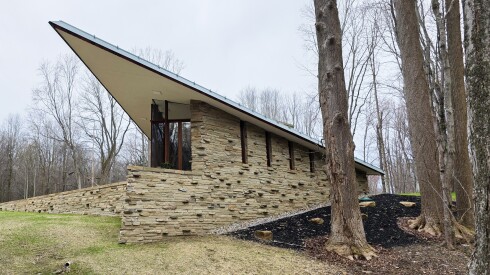When people think of southern Arizona and its border with Mexico, cactus and sun-baked sand may come to mind — but a mountain canyon with fall foliage, homestead cabins, and deer? Go high enough, and you’ll find this and more. The Huachuca Mountains climb to over 9000 feet just north of the border in Cochise County, about an hour and a half from Tucson. Toward the southern edge of the town of Sierra Vista, the Nature Conservancy has set up the Ramsey Canyon Preserve, which is ideal for hiking and birdwatching. The deer are tame, wild turkeys are common, and fourteen species of hummingbirds have been spotted among the 150+ species of birds that find refuge in this “sky island” — a mountain range that rises high enough above the surrounding desert to provide a cooler and wetter ecosystem. By late fall, the cottonwoods, maples, and sycamores transform the canyon into a landscape that would be reminiscent of New England if it weren’t for the omnipresent agave plants. Watch your step, and stay alert for the occasional black bear, javelina, or mountain lion. Chimneys, log cabins, and apple trees remain from early homesteaders who found refuge from the desert in these mountains, which were originally named “Huachuca"—meaning ‘thunder'—by the Apaches.
More Recommendations
HIking a "Sky Island" Canyon: Hummingbirds, Homesteads, Deer, and Bears
When people think of southern Arizona and its border with Mexico, cactus and sun-baked sand may come to mind — but a mountain canyon with fall foliage, homestead cabins, and deer? Go high enough, and you’ll find this and more. The Huachuca Mountains climb to over 9000 feet just north of the border in Cochise County, about an hour and a half from Tucson. Toward the southern edge of the town of Sierra Vista, the Nature Conservancy has set up the Ramsey Canyon Preserve, which is ideal for hiking and birdwatching. The deer are tame, wild turkeys are common, and fourteen species of hummingbirds have been spotted among the 150+ species of birds that find refuge in this “sky island” — a mountain range that rises high enough above the surrounding desert to provide a cooler and wetter ecosystem. By late fall, the cottonwoods, maples, and sycamores transform the canyon into a landscape that would be reminiscent of New England if it weren’t for the omnipresent agave plants. Watch your step, and stay alert for the occasional black bear, javelina, or mountain lion. Chimneys, log cabins, and apple trees remain from early homesteaders who found refuge from the desert in these mountains, which were originally named “Huachuca"—meaning ‘thunder'—by the Apaches.








